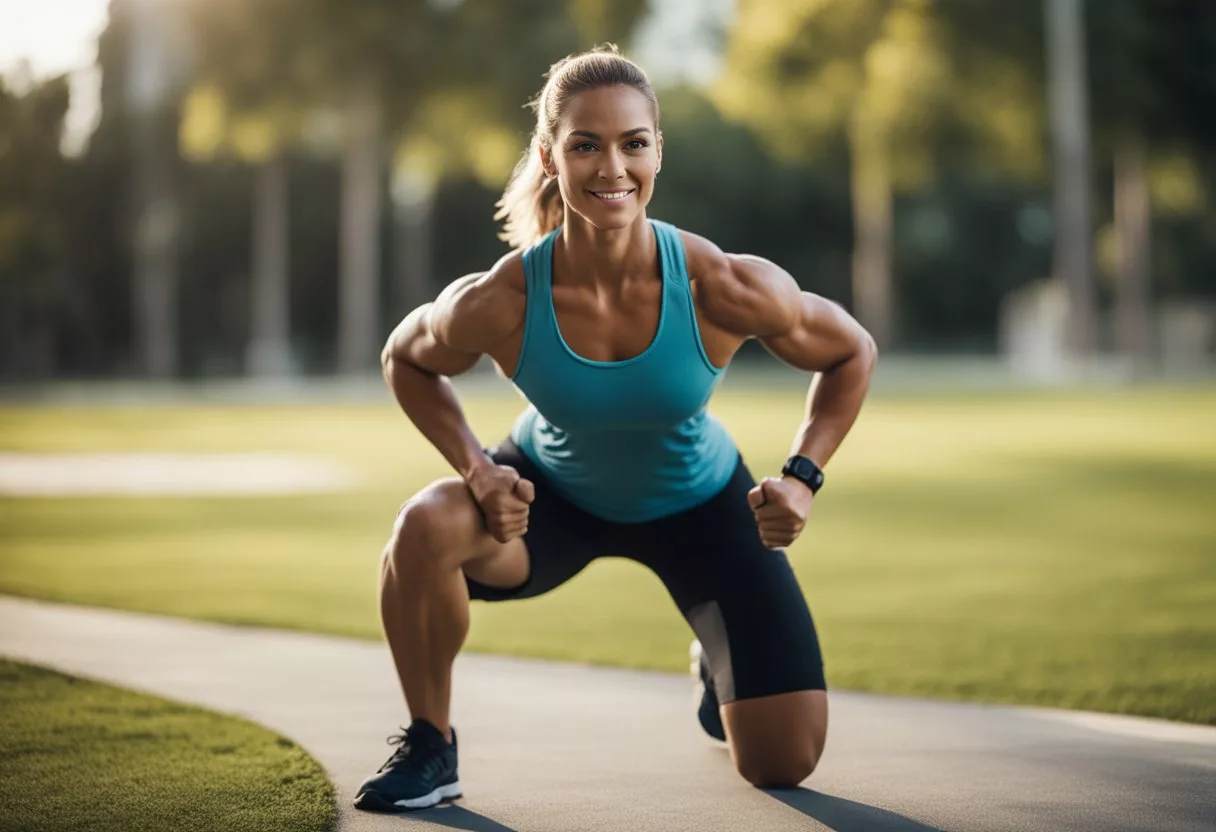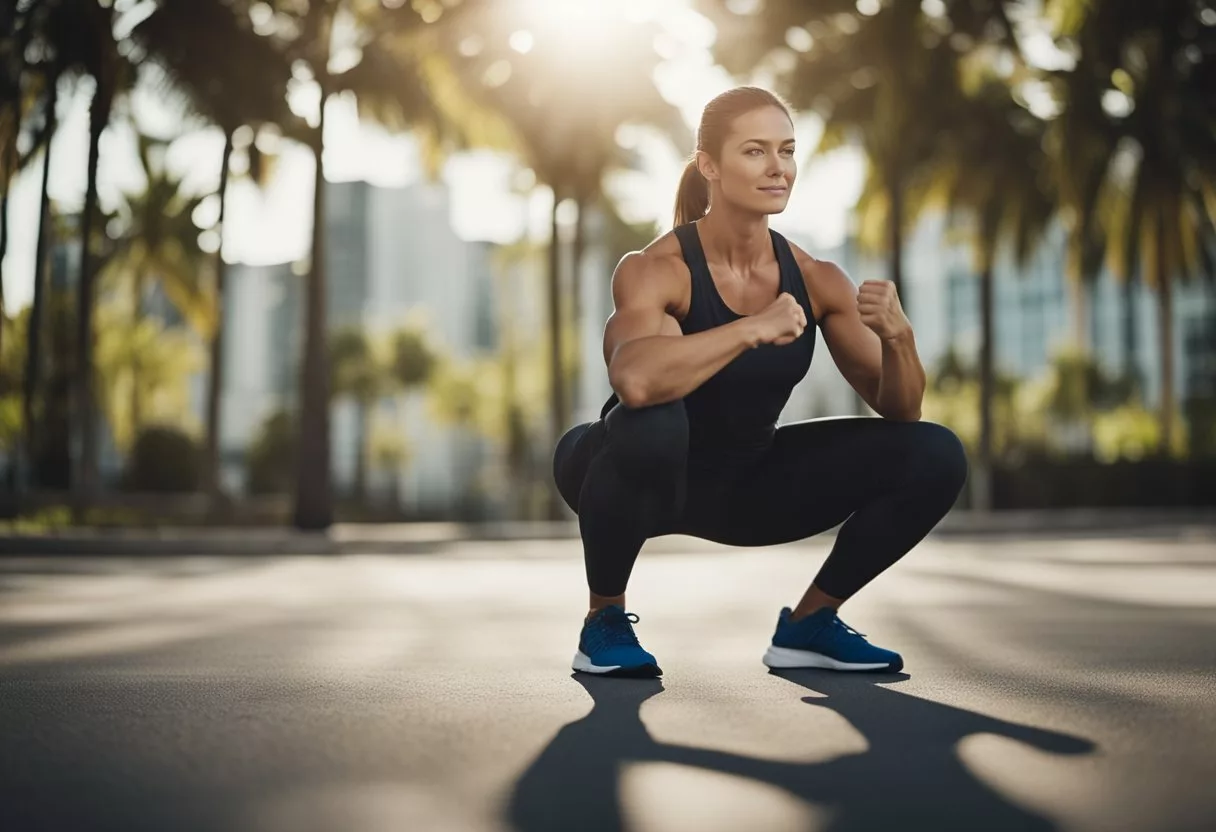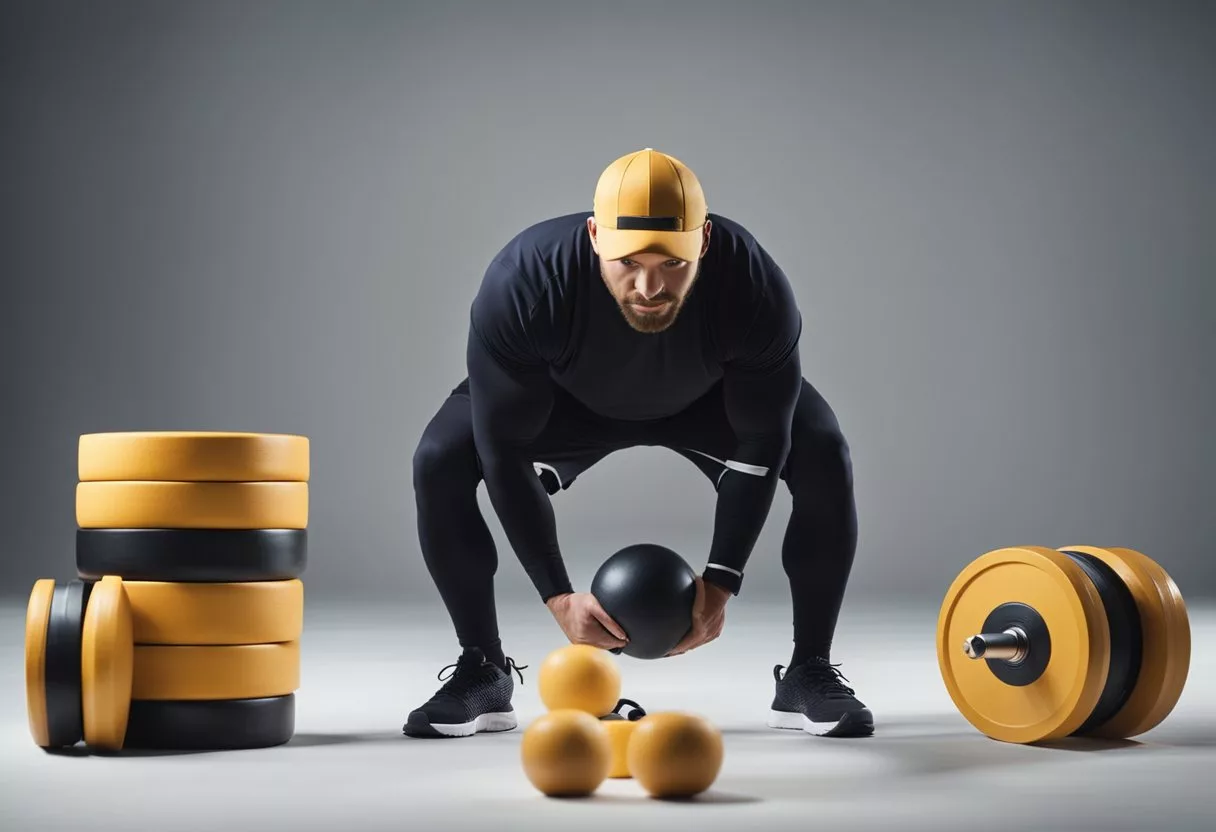Regular exercise is essential for maintaining good health and fitness, and squats are a popular exercise that many people include in their daily workout routine. Squats are a compound exercise that work multiple muscle groups, including the quadriceps, hamstrings, glutes, and core. But what happens to your body if you do squats every day?
Some people believe that doing squats every day can help to tone and strengthen the muscles in the lower body, while others worry that it may lead to overtraining or injury. In reality, the effects of daily squats can vary depending on a number of factors, including the intensity and duration of the exercise, as well as an individual’s fitness level and overall health.
In this article, we will explore the potential benefits and risks of doing squats every day, and examine the impact that this exercise can have on the body. From increased muscle strength and mass to improved joint stability and bone health, we will take a closer look at the many ways that daily squats can help to improve your physical fitness and overall well-being.
Understanding the Squat

Anatomy of a Squat
A squat is a compound exercise that works multiple muscles in the lower body, including the quadriceps, hamstrings, calves, and glutes. The primary muscle targeted during a squat is the quadriceps, which are located on the front of the thigh. The hamstrings, located on the back of the thigh, and the glutes, located in the buttocks, also play an important role in the movement.
During a squat, the body moves through a range of motion that involves flexion and extension of the hip, knee, and ankle joints. The movement begins with the hips moving back and down, while the knees bend and the heels lift off the ground. The body then lowers down until the thighs are parallel with the ground, before pushing back up to the starting position.
Types of Squats
There are various types of squats that can be performed to target different muscles and achieve different fitness goals. Some of the most common squat variations include bodyweight squats, barbell squats, front squats, and back squats.
Bodyweight squats are a great option for beginners or those who do not have access to weights. Barbell squats, on the other hand, involve holding a barbell across the shoulders or upper back while performing the movement. Front squats are similar to barbell squats, but the barbell is held in front of the body. Back squats, as the name suggests, involve holding the barbell behind the body.
Proper Form and Technique
Proper form and technique are essential when performing squats to prevent injury and maximize results. Some key points to keep in mind when performing squats include:
- Keeping the feet shoulder-width apart and pointing straight ahead
- Keeping the chest up and the back straight
- Engaging the core muscles to maintain stability
- Keeping the knees in line with the toes
- Lowering down until the thighs are parallel with the ground
- Pushing up through the heels to return to the starting position
It is important to start with a weight that is manageable and gradually increase the weight over time as strength improves.
Physical Benefits of Squats
Muscle Development
Squats are an effective exercise for building muscle in the lower body. They work the muscles in the hips, thighs, and glutes, making them a great exercise for anyone looking to develop stronger legs. Squats can also help to improve muscle mass, as they require a high amount of energy to perform. This energy is derived from calories, which means that squats can also help with weight management.
Strength and Performance
In addition to building muscle, squats can also help to improve overall strength and performance. They are a compound exercise, meaning that they work multiple muscle groups at once. This can help to improve overall strength and power, making it easier to perform other exercises and activities. Squats can also help to improve balance and stability, which can reduce the risk of injury.
Flexibility and Mobility
Squats can also help to improve flexibility and mobility in the lower body. They require a full range of motion in the hips, knees, and ankles, which can help to improve joint health and mobility. Squats can also help to improve flexibility in the muscles of the lower body, which can improve overall athletic performance and reduce the risk of injury.
Weight Management
Finally, squats can also be an effective exercise for weight management. They are a high-intensity exercise that can help to burn calories and reduce body fat. Squats also help to build muscle, which can increase metabolism and help to burn more calories throughout the day. This makes them a great exercise for anyone looking to lose weight or maintain a healthy weight.
Overall, squats offer a range of physical benefits, including muscle development, strength and performance, flexibility and mobility, and weight management. By incorporating squats into a regular exercise routine, individuals can improve their overall fitness and health.
Squats and Core Stability

Engaging the Core Muscles
Squats are a compound exercise that engages multiple muscle groups, including the core muscles. The core muscles are essential for maintaining stability and balance during squats. When performing squats, the core muscles are activated to stabilize the spine and maintain proper posture.
The rectus abdominis, obliques, and erector spinae are some of the primary muscles in the core that are engaged during squats. These muscles work together to maintain proper alignment of the spine and pelvis, which is crucial for preventing injury and improving overall stability.
Balance and Posture
In addition to engaging the core muscles, squats can also improve balance and posture. By strengthening the muscles in the legs and core, squats can help improve overall balance and stability. This can be particularly beneficial for older adults or individuals with balance issues.
Squats can also improve posture by strengthening the muscles in the back and core. Good posture is essential for maintaining a healthy spine and reducing the risk of injury. By improving posture, squats can help reduce the risk of back pain and other musculoskeletal issues.
Overall, incorporating squats into your exercise routine can be an effective way to improve core strength, balance, and posture. However, it is important to perform squats with proper form to ensure maximum benefits and reduce the risk of injury.
Injury Prevention and Safety
Common Squat-Related Injuries
Squatting is a safe exercise when performed correctly. However, improper form adding too much weight can lead to injuries. Some of the most common squat-related injuries include strains, sprains, and tears in the hips, knees, and lower back.
Overuse injuries can also occur when doing squats every day. Tendinitis, inflammation of the tendons, and bursitis, inflammation of the fluid-filled sacs that cushion the joints, are common overuse injuries.
Safe Squatting Practices
To prevent injuries, it is important to follow safe squatting practices. Proper form is crucial to prevent injuries and maximize the benefits of the exercise.
Before starting a squatting routine, it is important to warm up the muscles and joints. This can be done through dynamic stretching, such as leg swings or lunges.
When performing squats, it is important to keep the knees in line with the toes, and not let them collapse inward. The hips should be pushed back, and the back should remain straight. It is also important to keep the weight in the heels, rather than the toes.
It is recommended to start with bodyweight squats and gradually add weight as strength improves. Rest and recovery are also important to prevent overuse injuries.
In summary, squatting is a safe and effective exercise when performed correctly. Following proper form and gradually increasing weight can help prevent injuries and maximize the benefits of the exercise.
Squatting for Different Goals

Squats for Athletic Performance
Squats are one of the most effective exercises for improving athletic performance. They work the major muscles of the lower body, including the glutes, quads, hamstrings, and calves. Squats can help athletes improve their power, speed, and explosiveness, making them a popular exercise for sports such as basketball, football, and track and field.
In addition to improving lower body strength, squats can also help improve cardiorespiratory fitness. This is because squats are a compound exercise that work multiple muscle groups at once, which can increase heart rate and breathing rate. This makes squats a great exercise for athletes who need to improve their endurance as well as their strength.
Squats for General Fitness
Squats are also an excellent exercise for general fitness. They can help improve overall lower body strength, which can improve functional movement and reduce the risk of injury. Squats can also help improve bone density, which is important for preventing osteoporosis.
In addition to these benefits, squats can also help with weight loss. This is because squats are a high intensity exercise that can burn a significant number of calories. Squats can also help increase muscle mass, which can help boost metabolism and burn more calories at rest.
Overall, squats are a versatile exercise that can be used for a variety of goals. They can be incorporated into a strength training program, a cardiorespiratory fitness program, or a weight loss program. Squats are a functional movement that can improve overall lower body strength and reduce the risk of injury.
Programming Your Squat Routine
To get the most out of squatting every day, it’s important to have a well-designed program that takes into account factors such as frequency, volume, and progression. Here are some key considerations for programming your squat routine.
Frequency and Volume
When squatting every day, it’s important to find a frequency and volume that works for your body and goals. Some people may find success with squatting every day, while others may need more rest days. A certified personal trainer can help you determine the best frequency and volume for your individual needs.
To start, consider incorporating squats into your warm-up routine, doing a few sets of bodyweight squats before your main workout. From there, you can gradually increase the number of sets and reps you do each day, while also incorporating other squat variations, such as goblet squats or front squats.
Progression and Overload
To continue seeing progress with your squat routine, it’s important to incorporate progressive overload. This means gradually increasing the load or resistance you’re using over time. This can be done by adding weight to your squats, increasing the number of reps you do, or decreasing the rest time between sets.
It’s also important to pay attention to your form and technique when squatting every day. A trainer or coach can help you ensure that you’re using proper form and avoiding injury.
Incorporating Rest and Recovery
While squatting every day can be beneficial, it’s also important to incorporate rest and recovery into your routine. This can include taking rest days, getting enough sleep, and incorporating mobility work and stretching into your routine.
It’s also important to pay attention to any signs of overtraining or injury. If you experience pain or discomfort while squatting, it’s important to take a break and seek guidance from a qualified trainer or healthcare professional.
Overall, squatting every day can be a great way to build strength and improve your overall fitness. By following a well-designed program that takes into account factors such as frequency, volume, and progression, you can safely and effectively incorporate squats into your daily routine.
Advanced Squat Techniques
Powerlifting and Weightlifting
Powerlifting and weightlifting are two popular sports that involve squatting as a key component of their training. These sports require athletes to lift heavy weights, and squatting is an essential exercise to develop the strength and power needed to perform well.
In powerlifting, the squat is one of the three main lifts, along with the bench press and deadlift. Squatting is considered the most important lift in powerlifting, as it involves the largest muscles in the body, including the quads, glutes, and hamstrings. Proper form and technique are crucial in powerlifting, as lifting heavy weights can put a lot of stress on the body.
Weightlifting, on the other hand, involves two main lifts: the snatch and the clean and jerk. Both lifts require a deep squat position, which requires good mobility and flexibility. Weightlifting also requires a lot of explosive power, which can be developed through plyometric and explosive movements.
Plyometrics and Explosive Movements
Plyometrics and explosive movements are exercises that involve jumping, hopping, and bounding. These exercises are designed to develop explosive power and improve athletic performance. Plyometric exercises can be performed with bodyweight or with added resistance, such as weighted squats or squat jumps.
One example of a plyometric move that involves squatting is the squat jump. To perform a squat jump, an athlete starts in a squat position with their feet shoulder-width apart and their weight on their heels. They then explosively jump up, extending their hips, knees, and ankles. Upon landing, they immediately sink back into a squat position and repeat the movement.
It’s important to note that plyometric and explosive movements require good mobility and range of motion in the ankles, knees, and hips. Proper form and technique are also crucial to avoid injury.
In conclusion, advanced squat techniques can help athletes improve their performance and develop strength and power. Powerlifting and weightlifting involve heavy squatting, while plyometrics and explosive movements focus on developing explosive power. Proper form and technique are essential in all of these exercises to avoid injury and maximize results.
Nutrition and Squats

Fueling for Squat Workouts
To perform squats every day, one needs to fuel their body with the right nutrients. Carbohydrates are the primary source of energy for the body, and they should be consumed before a squat workout. Carbs provide the body with the necessary energy to perform the exercises and also help to prevent muscle breakdown.
Protein is also essential for building and repairing muscles. It is recommended to consume protein-rich foods after a workout to aid in muscle recovery. Some examples of protein-rich foods are chicken, fish, eggs, and lentils.
In addition to carbs and protein, fats are also necessary for the body. They provide energy and help to absorb vitamins. It is recommended to consume healthy fats such as avocados, nuts, and olive oil.
Recovery Nutrition
After a squat workout, the body needs nutrients to repair and recover. Protein is the most important nutrient for muscle recovery. It is recommended to consume protein within 30 minutes of a workout to aid in muscle recovery.
Carbohydrates are also necessary for recovery. They help to replenish glycogen stores in the muscles and liver. Some examples of carbohydrate-rich foods are fruits, vegetables, and whole grains.
In addition to protein and carbs, hydration is also essential for recovery. Water helps to transport nutrients throughout the body and aids in muscle recovery. It is recommended to drink water before, during, and after a workout to stay hydrated.
Overall, proper nutrition is essential for performing squats every day and aiding in muscle recovery. Consuming a balanced diet that includes carbs, protein, fats, and hydration will help to fuel the body and aid in muscle recovery.
Long-Term Considerations
Sustaining a Squat Practice
While squatting every day can have numerous benefits, it is important to consider the long-term effects of such a practice. Over time, the body may adapt to the movement, and the benefits may plateau. It is important to vary the types of squats performed and the amount of weight used to continue challenging the muscles.
Rest is also crucial for sustaining a squat practice. Without proper rest, the body may not have enough time to recover, leading to fatigue and potential injury. It is recommended to take at least one day off per week from squatting to allow the muscles to recover.
Adapting to Age and Ability
As the body ages, it may become more difficult to perform squats every day. It is important to adapt the practice to the individual’s age and ability. For example, older individuals may need to use lighter weights or perform modified versions of the squat to reduce the risk of injury.
Additionally, those with pre-existing conditions or injuries may need to modify their squat practice to prevent exacerbating their condition. It is important to consult with a healthcare professional before beginning a squat practice, especially if there are any underlying health concerns.
Overall, incorporating squats into a regular exercise routine can have numerous benefits for longevity, performance, and injury prevention. However, it is important to consider long-term sustainability and adapt the practice to individual needs and abilities.